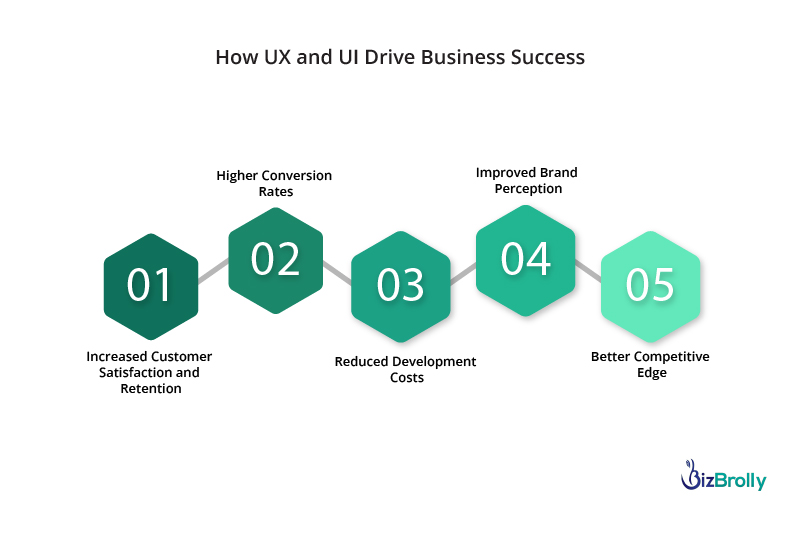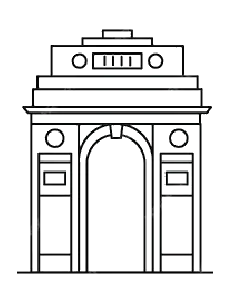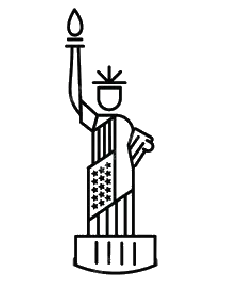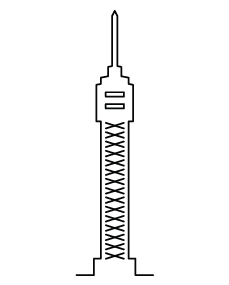Important Characteristics To Consider While Hiring a UX/UI Design Company


User experience (UX) and user interface (UI) design are critical components for creating successful digital products. Whether you’re developing a website, an application, or an entire digital ecosystem, the right UX/UI design company can make all the difference in your project’s success. This article explores the essential characteristics you should consider when hiring a UX/UI design company to ensure your goals align with their expertise. A great UX/UI design company should prioritize user-centered design, ensuring that the final product delivers an intuitive, seamless experience for the user. Additionally, their team should have a deep understanding of your target audience, industry, and brand values, enabling them to craft designs that resonate with users. It’s important that they maintain open communication throughout the design process, allowing for feedback and adjustments to refine the product as it progresses. Moreover, the company should have a proven track record of successful projects and be well-versed in the latest design trends, tools, and technologies to ensure that your digital product stands out in a competitive market.
The success of digital products is largely determined by the design of the user interface (UI) and user experience (UX) in today’s digital-first environment. User satisfaction, retention rates, and overall business outcomes can all be greatly impacted by a well-designed UX/UI, regardless of the platform—website, mobile app, or enterprise software. Businesses frequently go to seasoned UX/UI design firms to realize their ideas since they understand how important design is. But choosing the correct company is a difficult task. Agencies abound in the global UX/UI design market, many promising top-notch services.
Selecting a UX/UI design company requires careful evaluation of various factors to ensure that the agency aligns with your business goals, target audience, and industry standards. From their portfolio to their communication practices, every aspect contributes to determining the company’s competence and suitability for your project.
Let’s take a look at the essential characteristics to consider while hiring a UX/UI design company to ensure a successful collaboration and outstanding design outcomes.

Assessing Their Previous Work: One of the first things to evaluate is the company’s portfolio. A strong portfolio showcases their ability to create visually appealing and functional designs across different industries. Look for diversity in their projects, paying close attention to:
Reviewing case studies can also provide insights into the challenges they faced and how they delivered solutions.
Industry-Specific Experience: While general expertise is valuable, industry-specific experience can give the company an edge in understanding your target audience and market dynamics. For example, a UX/UI design firm specializing in healthcare applications will be well-versed in HIPAA compliance and usability needs for medical professionals and patients alike.
Emphasis on Research: A comprehensive design process starts with thorough research. Ensure the company prioritizes:
Prototyping and Iteration: Prototyping and iteration are critical to refining design concepts. The agency should demonstrate a willingness to test ideas, gather feedback, and iterate until they achieve optimal results. This approach ensures that the final product is user-friendly and aligns with business objectives.
Expertise in Design Tools: Evaluate the company’s proficiency with industry-standard design tools like Figma, Sketch, Adobe XD, or InVision. Mastery of these tools ensures they can create high-fidelity prototypes and seamless design handoffs to development teams. The use of these tools also enhances efficiency by enabling rapid iterations and real-time collaboration among team members. A company proficient in these tools will be able to deliver interactive mockups, visual designs, and prototypes that closely align with user expectations, reducing the need for rework and ensuring that the final product meets the design vision.
Collaboration Between Designers and Developers: A seamless transition from design to development is crucial for project success. Check if the company fosters effective collaboration between its designers and developers to minimize discrepancies during implementation. Strong communication channels and a shared understanding of design requirements help to reduce misunderstandings, allowing developers to implement designs accurately and efficiently. Furthermore, a collaborative approach ensures that both teams contribute to problem-solving, leading to a more robust and user-centric final product. This partnership is key to delivering high-quality solutions that align with both functional and aesthetic goals.
Understanding Business Goals: A good UX/UI design company doesn’t just focus on aesthetics; it prioritizes aligning the design with your business objectives. Look for agencies that:
Transparency and Communication: Effective communication is a hallmark of a reliable agency. Evaluate their transparency in discussing timelines, budgets, and potential challenges. Regular updates and open lines of communication can prevent misunderstandings and foster trust.
Prioritizing Accessibility: Inclusivity is a key component of modern UX/UI design. Ensure the company adheres to accessibility standards, such as WCAG, to create designs that accommodate users with disabilities. This includes considering visual impairments, hearing challenges, and motor disabilities to ensure that all users can interact with the product effortlessly. Implementing features like keyboard navigation, voice commands, and screen readers ensures that no user is excluded, thereby improving overall user engagement and satisfaction.
Focus on Usability: User-friendly designs are the backbone of any successful digital product. The agency should prioritize intuitive navigation, clear information hierarchy, and seamless interactions to enhance user satisfaction. Simplicity in design, effective call-to-action buttons, and consistent layout across all pages contribute to a positive user experience. Testing with real users and gathering feedback helps to identify pain points and refine usability, making sure the product is easy to understand and enjoyable to use, ultimately increasing conversion rates and customer loyalty.
Experienced Team Members: The expertise of individual team members directly impacts the quality of the project. Inquire about the qualifications, certifications, and experience of the designers, researchers, and project managers. A team with diverse skills, industry knowledge, and a track record of successful projects will be better equipped to meet your goals and deliver results that align with your expectations.
Alignment with Your Company’s Culture: A cultural fit between your organization and the design company can significantly influence collaboration. Shared values and working styles often lead to smoother project execution, fostering better communication and a deeper understanding of project requirements. When both teams share a common vision and approach, it helps in addressing challenges quickly, staying aligned on objectives, and producing a more cohesive final product. Ensure the design team understands your company’s mission, values, and goals to build a long-lasting, productive relationship.
Transparent Pricing: While cost shouldn’t be the sole deciding factor, it’s crucial to understand the agency’s pricing model. Transparent pricing ensures you’re aware of what you’re paying for and helps prevent unexpected expenses. A clear breakdown of services, along with any potential add-ons or extra charges, allows you to make informed decisions. It’s important to ensure that the value you’re getting aligns with the cost, ensuring no hidden surprises later.
Balancing Cost and Quality: Opting for the cheapest option can often lead to compromised quality. Instead, focus on finding a company that offers the best value for your investment by delivering high-quality designs within your budget. The best agencies combine affordable pricing with exceptional service and results. Ensure that the agency’s portfolio demonstrates consistency and creativity, showing that they can meet your needs without cutting corners. It’s all about finding a balance—quality should never be sacrificed for a lower price, and a slightly higher cost could be worth the premium if it ensures superior outcomes.
User Experience (UX) design focuses on creating interactions that are intuitive, efficient, and satisfying. It emphasizes understanding user needs, streamlining navigation, and eliminating friction points. A well-executed UX ensures that users can achieve their goals, such as completing a purchase or signing up for a service, quickly and effortlessly. By addressing these pain points, businesses can improve usability and reduce frustration, fostering positive user interactions.
User Interface (UI) design focuses on the visual elements of a digital product, including typography, colors, buttons, and layouts. An aesthetically pleasing UI captures attention, while functional design ensures clarity and usability. A harmonious UI design doesn’t just attract users—it keeps them engaged by providing an inviting and visually coherent experience.
UX/UI design is about more than creating attractive digital products—it’s about solving problems and meeting user expectations. By focusing on the user’s journey and providing a cohesive experience, businesses can build trust, improve satisfaction, and encourage repeat engagement.
Ultimately, UX/UI design serves as the bridge between functionality and user satisfaction, shaping how users perceive and interact with a brand in today’s digital-first world.

User Experience (UX) and User Interface (UI) design play pivotal roles in shaping how users interact with a product or service. While these two terms are often used interchangeably, they represent distinct yet complementary elements that, when executed effectively, can significantly boost a company’s success.
A product that provides a seamless, enjoyable user experience is more likely to retain customers. Happy users are more likely to become repeat customers, which is crucial for the long-term success of a business. UX and UI ensure that the user journey is smooth, intuitive, and visually appealing, leading to higher satisfaction and loyalty.
Well-designed UX and UI can significantly impact conversion rates. When users can easily find what they’re looking for and interact with the product effortlessly, they are more likely to complete a desired action, whether it’s making a purchase, subscribing to a service, or filling out a form. Clear calls to action, intuitive navigation, and fast load times, all facilitated by good UX/UI design, can drive higher conversions.
Investing in good UX and UI design early in the development process can save money in the long run. A well-researched UX strategy prevents costly design overhauls later by ensuring the product meets user expectations from the start. Likewise, UI design that is well thought out reduces the need for extensive revisions, speeding up development and improving time-to-market.
The user experience and interface design reflect a company’s commitment to quality. A visually appealing and easy-to-use product builds trust with users, positively influencing brand perception. A brand that prioritizes both UX and UI sends the message that it values its customers, which can lead to stronger customer relationships and improved brand loyalty.
In today’s competitive marketplace, businesses that invest in top-tier UX and UI design stand out. A product that delivers a superior user experience and visually engages customers has a higher chance of being favored over competitors with clunky or unattractive interfaces. By offering a better overall experience, businesses can attract and retain more customers.
Hiring the right UX/UI design company is a strategic decision that can significantly impact your digital product’s success. By carefully evaluating their portfolio, design process, client feedback, and expertise, you can ensure a productive partnership that delivers outstanding results. Remember, the right agency will not only bring your vision to life but also align it with user needs and business goals, creating a product that stands out in a competitive market.

In recent years, artificial intelligence (AI) has rapidly advanced, with neural ...
Explore more
Cloud computing is transforming the manufacturing industry by making it easier t...
Explore more


D-23, Sector 63, Noida,
UP - 201307

141 Westgate Dr, Edison,
NJ - 08820

4 Black lion court, Mill road, Kent, UK – ME71HL

2207, 2220 Lakeshore Blvd W, Toronto ON- M8V0C1

94A Central Road, Jacanlee, Johannesburg 2194